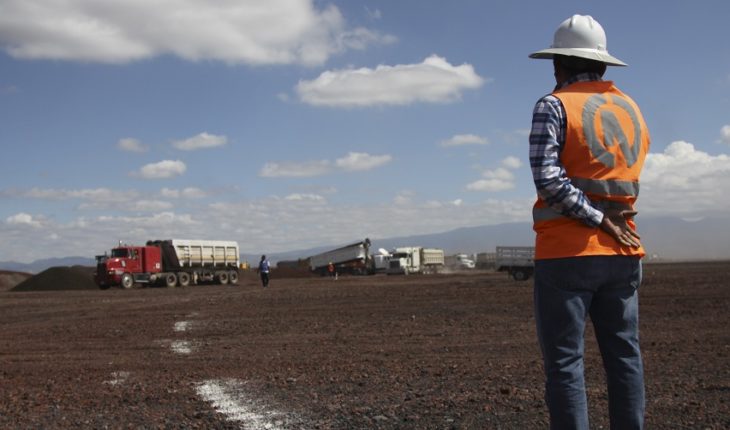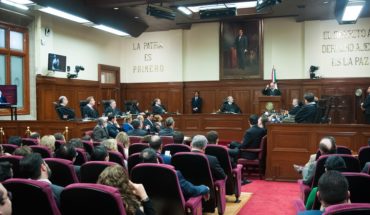The government of Enrique Peña Nieto bet on the construction of the New Airport in Texcoco, the so-called NAIM that would eventually cancel Andrés Manuel López Obrador, so before leaving power the Secretariat of Communications and Transport (SCT) was the unit that increased its spending the most, and which exceeded by the largest the budget allocated to it by legislators.
At the same time, the then Secretariat for Social Development (Sedesol) was the body that left more resources unused, compared to what was approved by the Deputies, a sub-exercise that focused on programs such as the construction of indigenous infrastructure, and that of social inclusion Prospera.
Spending lags were recorded in “significant social programmes”, while, on the contrary, over-exercises were observed in administrative or support programmes, according to an analysis by the Centre for Public Finance Studies (CEFP).
According to this study, sent to federal legislators, in 2018 – the last year of Peña Nieto – for the SCT’s “Airport Construction Projects” program, 5.55 billion pesos were approved, and in the end the expenditure was 59,690.7 million pesos.
It’s a difference of 54 thousand 140.7 million pesos, 975% more, compared to what was originally approved. The previous year, 2017, the over-exercise of that same allocation had been 12 thousand 518.9 mdp, 225%; in 2016, 31,000,394.7 mdp, 551%, and in 2015 14,053 mdp, a 200% difference from what was approved.
As noted, 2018 was by far the year with the highest over-exercise of the K005 area for airport construction.
Read: Peña Government spent 102 mdp in three years to promote NAIM in media
The 2018 amount for the airport contributed to the the SCT was the dependence with the highest variation, between the exercised and the approved (an over-exercise of 57,695.9 million pesos), Ministry of Public Education (exceeded its budget of 34,497.3 million pesos), and the Ministry of the Interior (20,792.1 mdp).
According to the data of the Ministry of Finance, Communications and Transport in 2018 increased its expenditure by 33.4% compared to the previous year, becoming the dependency with the greatest rise.
In its first installment on public account auditing 2018, the Federation’s Superior Audit (ASF) noted an amount to be clarified or an alleged irregular expenditure of 44 million 128 thousand 446 pesos, in works related to the construction of the New Airport Mexico City International (NAIM).
Sedesol ‘saved’ budget
The other side of the coin, according to the study, are Sedesol and the Non-Sectorized Entities, which ceased to be held in 2018 six thousand 774.5 million pesos, regarding what was approved by Congress.
That is, they were available resources, social budget that was not used.
In the On the 20th of the Secretariat for Social Development, the Center for Studies detailed, 5 thousand 941 million pesos were discontinued, 5.6% less than approved.
This lower expenditure was recorded mainly in the s072 PROSPERA Social Inclusion Programme, “in which out of an annual budget of 46 thousand 396.0 mdp, at the end of the year only 39 thousand 811.4 mdp was exercised, this is that 6,584.6 million pesos were stopped.”
In a review of public accounts, each year the Secretariat for Social Development ended up spending less than it was approved for the S072 PROSPERA program.
In 2014, he was approved of 38 thousand 551.8 mdp, and spent 34 thousand 294.2 mdp, a sub-exercise of 4 thousand 257 million pesos.
In 2015, he was approved 39 thousand 862.5 mdp, and the expense was 37,911.3 mdp, a difference of 1,951.2 mdp.
In 2016, he was approved 46 thousand 327.5 mdp, and the expense was 44 thousand 274 mdp, a difference of 2 thousand 053.4 mdp.
In 2017, he was approved 46 thousand 184.3 mdp, and the expense exercised was 41 thousand 212.9 mdp, a sub-exercise of 4,971.4 mdp.
The highest sub-exercises occurred in 2017 and 2018, at the close of peña Nieto’s government.
Back to the analysis of social spending in 2018, in the S176 “Pension for Older” program, three thousand 853.4 mdp were discontinued, although the Study Center also explained that “these variations were partially offset by the higher expenditures on other programs, such as the M001 ‘Administrative Support Activities’, in which a thousand 268.2 mdp more than authorized were eroded”.
As for Ramo 47 “Non-Sectorized Entities” there were lower erogations at 833.5 mdp than approved, which in relative terms meant a reduction of 9%.
“This spending crunch was basically recorded in two programs: E033 ‘Victim Care’ 476.8 mdp, which meant 55.9% below its annual budget; and S179 ‘Indigenous Infrastructure Program’ 291.7 mdp were left unsweed,” the Center for Studies said.
“It is noteworthy that lags in spending have been recorded in important social programmes, while over-exercises, in most cases discussed, were observed in administrative or support programmes”, Added.
Regarding the over-exercise of the PLA, the Centre noted that the “Supports education centres and organizations” 23 thousand 579.5 million pesos were exercised above approved, which involved variation or over-exercise of 763.2%.
“In this regard, it should be noted that, since 2014 on a recurring basis, the largest expenditure in Ramo 11 has been largely determined by Pp U080 ‘Supports for education centres and organisations’, so that it would be advisable to know what causes that year after year are exercised in this, resources far superior to those that are approved” Budget, the CEFF indicated.
“In fact, the Federation’s Superior Audit, in the 2016 Public Account review, regarding this program noted, inter alia, lack of supporting or proof of spending documentation, payments in excess of those set out in the tabulator, personnel who were not located in the workplace, non-compliance with the accounting and budget system based on the provisions of the General Law on Government Accounting, in addition to differences in quarterly reports, between the amount ministered and the reported as paid to the SHCP,” he added.
In the functional analysis of programmable expenditure, spending on Social Development, with all and sub-exercises, is seen as increasing by 1.4% per year in 2018. While there was a hike, this was preceded by a 7.7% reduction in 2017, the year Peña Nieto’s government contracted more social spending.
The increase in 2018 had as main elements Social Protection, Education and Health.
Throughout the previous administration, Social Development was the role to which the most programmable expenditure was allocated, 57.4% of the total; for Economic Development was 31.5%, and for government 6.9%.
And in fact it was the only one that, on average, had an annual growth of 1.1%; government spending (which includes Justice, Homeland Security and Homeland Security) averaged annual growth of 0%, and economic development was -1.5%.
In the first quarter of 2019, López Obrador’s government allocated 62% of programmable spending to Social Development, almost 5% more compared to the average observed across Peña Nieto’s government; on the other hand, Economic Development has allocated 3% less, although within this area it gives preponderance to energy expenditure.
From January to May, with López Obrador as president, the Energy Secretariat spent 457% more, compared to the same period last year.
What we do in Animal Político requires professional journalists, teamwork, dialogue with readers and something very important: independence. You can help us keep going. Be part of the team.
Subscribe to Animal Politician, receive benefits and support free journalism.#YoSoyAnimal





